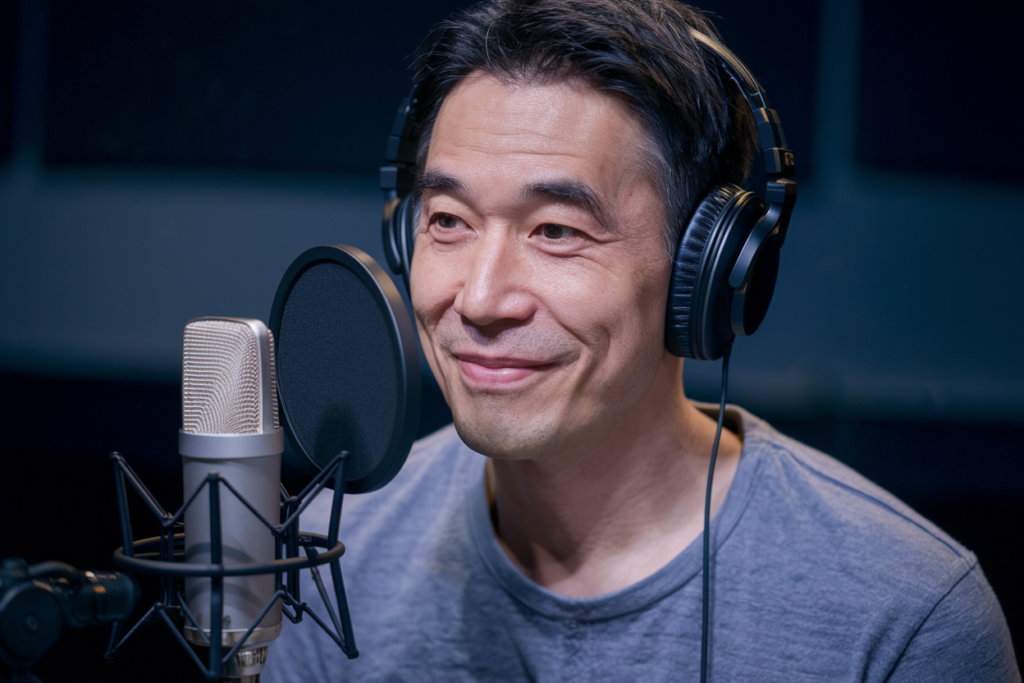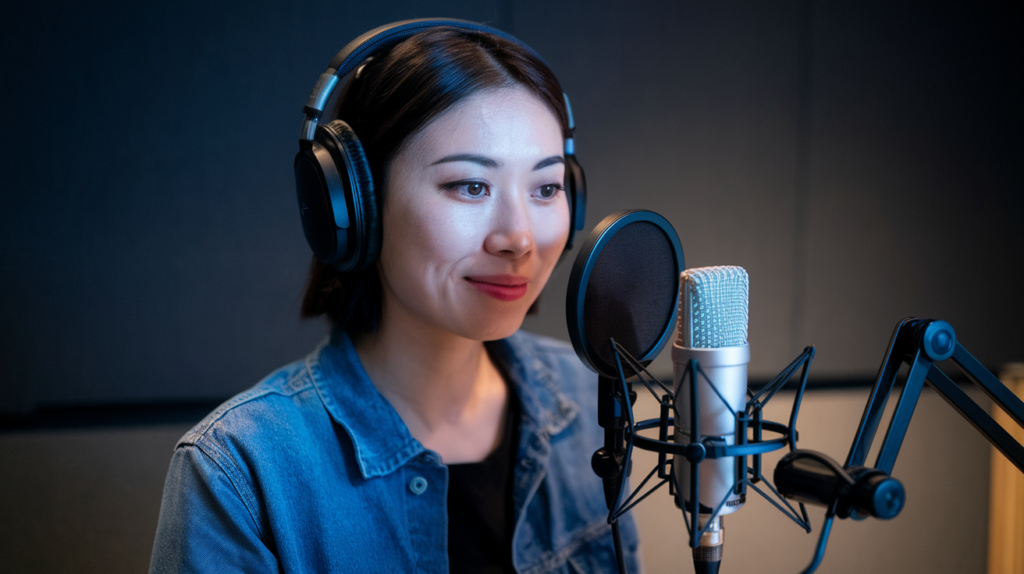Key Takeaways
- Understanding Dialects: Okinawan dialect (Uchinaguchi) and standard Japanese have distinct vocabulary, phonetics, and grammar that impact voiceover performances.
- Cultural Connection: Using Uchinaguchi fosters a deeper emotional connection with local audiences, while standard Japanese ensures clarity for broader demographics.
- Voiceover Impact: The choice of dialect significantly influences audience perception in various media formats, from animation to commercials.
- Historical Significance: The development of both dialects reflects unique historical contexts; Uchinaguchi carries indigenous influences while standard Japanese emerged as a unifying language.
- Engagement Strategies: Selecting the appropriate dialect enhances authenticity and engagement, making it essential to consider audience preferences when producing content.
- Respecting Identities: Understanding cultural implications tied to each dialect can help build trust and foster connections with listeners across Japan.
Ever wondered how the Okinawan dialect stacks up against standard Japanese in voiceovers? If you’re diving into the world of voice acting or audio production, understanding these nuances can make all the difference.
Okinawa’s unique linguistic flavor offers a rich cultural backdrop that sets it apart from standard Japanese. But why does this matter for voiceovers? The choice between these two can impact audience connection and authenticity. Whether you’re producing content for local audiences or aiming for broader reach, knowing when to use each dialect is crucial. Let’s explore how these differences play out in voiceover work and what you need to consider to resonate with your listeners effectively.
Overview of Okinawan Dialect and Standard Japanese
Okinawan dialect, known as Uchinaguchi, represents a unique linguistic heritage distinct from standard Japanese. It’s spoken primarily on the Okinawa Islands and encompasses various regional variations. This dialect features different vocabulary, phonetics, and grammar that reflect Okinawa’s rich culture and history.
Standard Japanese serves as the national language, unifying diverse regions across Japan. It’s characterized by its structured syntax and widespread use in media, education, and government. While many people in Okinawa are fluent in both languages, the nuances between them can significantly impact communication.
When considering voiceovers for projects targeting audiences familiar with either language variant, understanding these differences is crucial. A voice artist proficient in Uchinaguchi can evoke a deeper emotional connection with an audience from Okinawa. Conversely, using standard Japanese ensures clarity for broader audiences throughout Japan.
Voice over talent must recognize these distinctions to enhance authenticity in their performances. Selecting the appropriate dialect not only conveys respect for cultural identity but also increases engagement among listeners who appreciate local nuances. Whether you’re aiming for a vibrant local feel or a more generalized appeal, knowing when to choose one over the other can make all the difference in your project’s success.
Historical Context
Understanding the historical context of Okinawan dialect and standard Japanese enriches the conversation around voiceovers. Each language form carries its unique background that influences communication preferences.
Development of Okinawan Dialect
Okinawan dialect, or Uchinaguchi, developed in isolation from mainland Japan due to geographical and political factors. This dialect incorporates elements from indigenous languages and historical influences from Chinese and Southeast Asian cultures. Over centuries, it evolved into a distinct linguistic identity reflecting the island’s rich heritage. The development of Uchinaguchi heavily impacts voiceover work, as proficient voice artists can tap into local nuances, making their performances resonate with native audiences on a deeper emotional level.
Evolution of Standard Japanese
Standard Japanese emerged as a unifying language across diverse regions of Japan during the Meiji Restoration in the late 19th century. It became essential for education, government, and media, promoting consistency in communication nationwide. As standard Japanese continues to evolve with modern influence, it remains crucial for voiceover talent aiming to reach broader markets. Voice actors using standard Japanese ensure clarity and accessibility while delivering messages across various platforms. Understanding these evolutionary trends aids clients in selecting appropriate voices for their projects based on audience needs and cultural context.
Voiceovers in Japan
Voiceovers play a crucial role in Japanese media, enhancing storytelling and bringing characters to life. They shape audience perceptions, making the choice of voice talent essential for any project.
Role of Voiceovers in Media
Voiceovers serve various purposes across different media formats. In animation, they help define character personalities and emotions, creating connections with viewers. For commercials, effective voice artists convey brand messages clearly and persuasively, impacting consumer behavior. In documentaries or educational content, clear narration ensures that information is accessible and engaging. The right voice over talent can transform scripts into compelling audio experiences that resonate with listeners.
Popularity of Dialects in Voiceovers
Dialects enrich voiceover work by adding authenticity and cultural depth. While standard Japanese remains dominant due to its accessibility for a broad audience, dialects like Uchinaguchi offer unique flavors that appeal to local communities. Many listeners appreciate hearing familiar sounds and expressions; this familiarity fosters trust and connection. As clients aim for relatability in their projects, considering regional dialects can be an effective way to engage specific target demographics while honoring cultural identity.
Okinawan Dialect vs Standard Japanese in Voiceovers
When it comes to voiceovers, the choice between Okinawan dialect and standard Japanese can significantly impact your project. Understanding these differences enhances audience engagement and ensures authenticity in your messaging.
Unique Characteristics of Okinawan Dialect
Uchinaguchi, or the Okinawan dialect, boasts distinct vocabulary, phonetics, and grammar that set it apart from standard Japanese. This unique character reflects the rich cultural heritage of Okinawa. For instance, many words convey meanings tied to local customs or traditions that may not exist in standard Japanese. A voice artist fluent in Uchinaguchi can bring these nuances to life, creating a connection with local audiences.
Moreover, the pronunciation variations create a melodic quality that’s distinctive to this dialect. If you want your project to resonate more deeply with residents of Okinawa, selecting a voice actor proficient in Uchinaguchi is essential. Their ability to capture regional inflections and emotional subtleties leads to an authentic listening experience.
Advantages of Standard Japanese in Voiceovers
Standard Japanese serves as the national language and offers accessibility across diverse demographics. Its structured syntax makes it easily understood by listeners throughout Japan. When using standard Japanese for voiceovers, clarity remains paramount—ideal for projects targeting wider audiences like educational content or commercials aimed at national reach.
Additionally, employing voice talent skilled in standard Japanese provides consistency in tone and style across multiple media formats. This uniformity supports brand identity while ensuring messages remain clear regardless of geographical location. If you’re aiming for broad appeal without losing professionalism, opting for a voice over artist who excels in standard Japanese presents an effective solution.
Both Uchinaguchi and standard Japanese have their unique strengths when applied to voiceover work. By understanding these characteristics deeply, you can choose the right approach that aligns with your target audience’s preferences while enhancing overall engagement.
Cultural Implications
Choosing between the Okinawan dialect and standard Japanese for voiceovers carries significant cultural implications. Uchinaguchi embodies Okinawa’s unique heritage, reflecting local traditions, values, and history. When a voice artist uses Uchinaguchi, they tap into these deep cultural roots, allowing them to resonate with listeners on an emotional level. This connection can be particularly powerful in storytelling and multimedia projects that aim to evoke specific sentiments.
On the other hand, standard Japanese serves as a common thread throughout Japan. It promotes clarity and accessibility across diverse audiences. For many projects targeting a national demographic, opting for standard Japanese ensures your message reaches as many people as possible without losing its essence.
Understanding these nuances enhances your approach to selecting voice talent. If you’re looking to engage with local communities or convey authenticity in regional themes, choosing a voice actor proficient in Uchinaguchi makes sense. They bring not just language skills but also cultural insights that enrich the narrative.
In contrast, if broad appeal is the priority—like in advertisements or educational content—standard Japanese might just hit the mark. It allows you to maintain consistency while appealing to various audience segments across Japan.
Considering these cultural factors isn’t merely about language choice; it’s about respecting identities and building trust with your audience. When you align your project’s tone with appropriate dialects, you’re likely to foster deeper connections that go beyond mere words—a crucial aspect of effective communication in today’s media landscape.
Ultimately, whether you choose Uchinaguchi or standard Japanese influences how well your audience connects with your message. By understanding these cultural implications more deeply, you empower yourself to make informed choices that enhance engagement and authenticity in all aspects of your project.
Conclusion
Choosing between Okinawan dialect and standard Japanese in voiceovers isn’t just about language; it’s about connection. Uchinaguchi offers a rich cultural tapestry that resonates deeply with local audiences, while standard Japanese provides clarity and accessibility for broader reach.
Understanding these nuances allows you to select the right voice talent that aligns with your project’s goals. Whether you’re aiming for emotional depth or nationwide appeal, recognizing the strengths of both dialects can significantly enhance audience engagement. Ultimately, honoring cultural identities through thoughtful language choices fosters trust and relatability in your messaging.
Frequently Asked Questions
What is Uchinaguchi?
Uchinaguchi, also known as the Okinawan dialect, is a unique language spoken in Okinawa. It features distinct vocabulary, phonetics, and grammar that reflect the island’s rich cultural heritage. Unlike standard Japanese, Uchinaguchi developed separately and has influences from indigenous languages and historical connections to Chinese and Southeast Asian cultures.
How does Uchinaguchi differ from standard Japanese?
Uchinaguchi differs from standard Japanese in terms of vocabulary, pronunciation, and grammatical structure. While standard Japanese is more structured and widely used across Japan for education and media, Uchinaguchi conveys local nuances and emotional depth specific to Okinawa’s culture.
Why are voiceovers important in Japanese media?
Voiceovers play a crucial role in enhancing storytelling across various media formats like animation, commercials, and educational content. They help create engaging audio experiences that resonate with audiences by providing clarity or cultural authenticity based on the chosen dialect.
When should I choose Uchinaguchi for voiceovers?
Choose Uchinaguchi for projects targeting local audiences or those seeking to evoke strong emotional connections through culturally rich narratives. This dialect can add authenticity and depth that resonates well with listeners familiar with Okinawan culture.
When is it better to use standard Japanese for voiceovers?
Standard Japanese is preferable when aiming for clarity and consistency across a national audience. It ensures accessibility for broader demographics while maintaining professional standards needed for most commercial projects in Japan.
How do cultural implications affect my choice of dialect?
Cultural implications are vital when selecting a dialect because they influence audience connection. Using Uchinaguchi showcases respect for Okinawa’s unique heritage; meanwhile, standard Japanese promotes wider understanding but may lack local flavor essential for certain narratives.
Can choosing the right dialect enhance engagement?
Yes! Selecting the appropriate dialect can significantly enhance audience engagement by fostering relatability. Projects using regional dialects like Uchinaguchi can connect emotionally with specific demographics while respecting their cultural identity, leading to stronger viewer loyalty.







